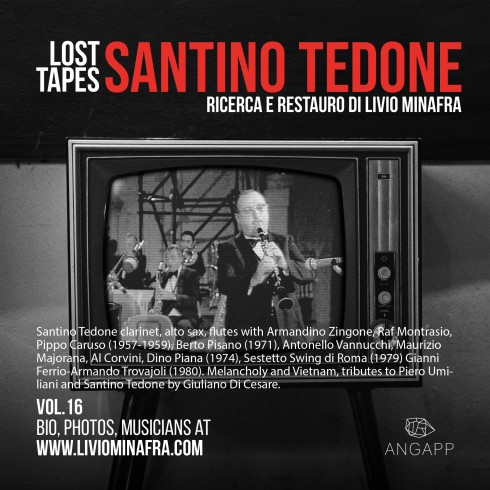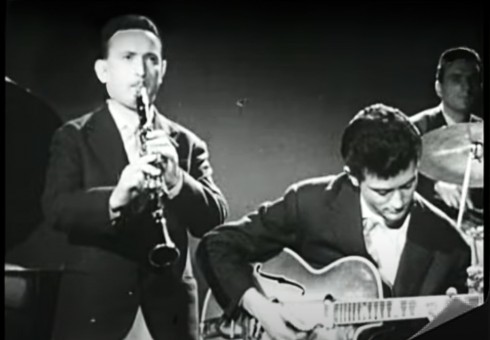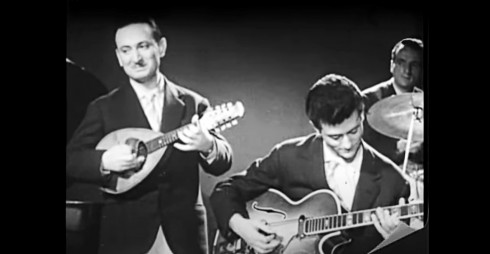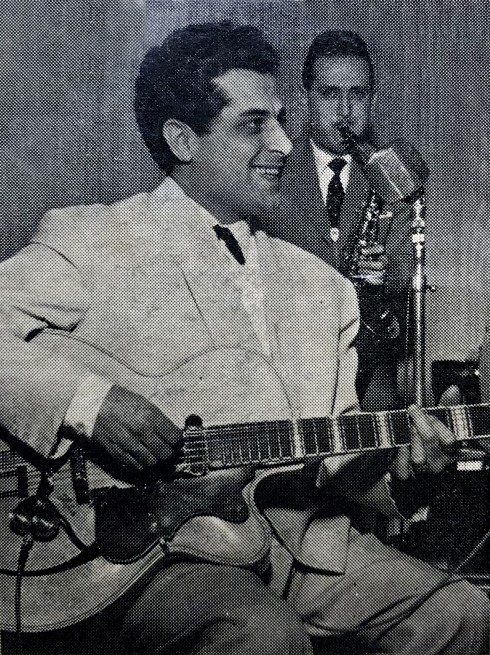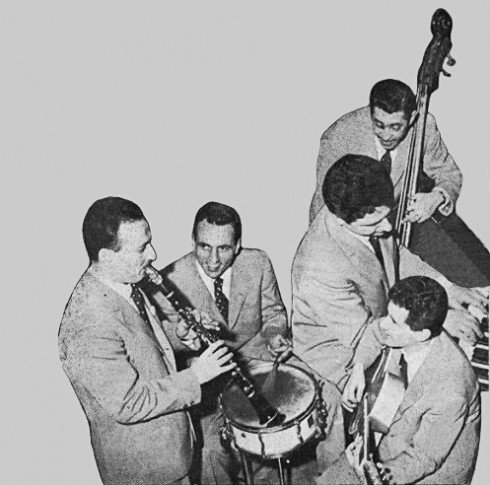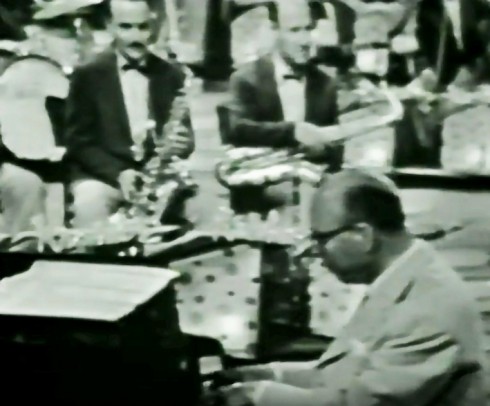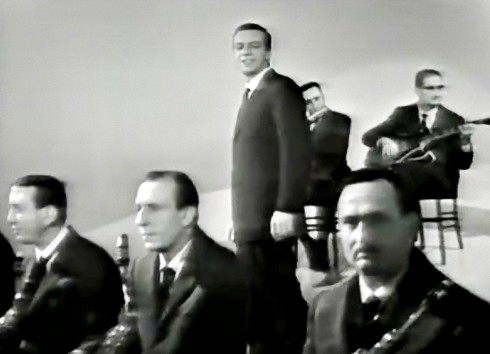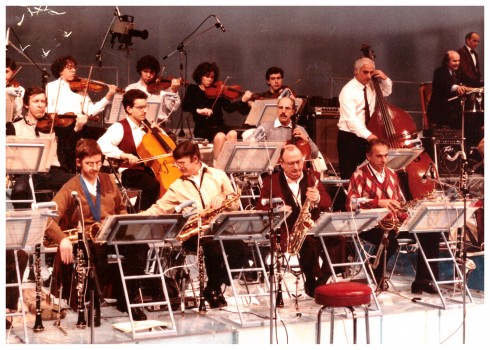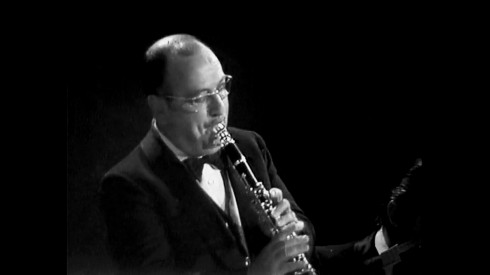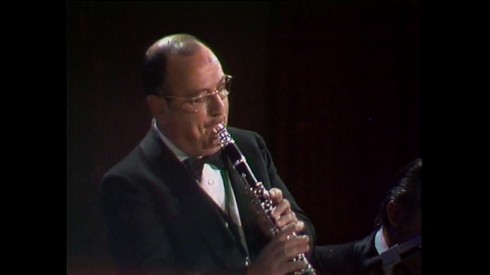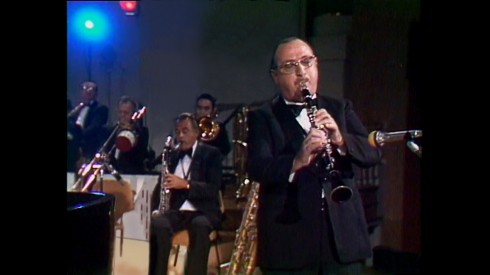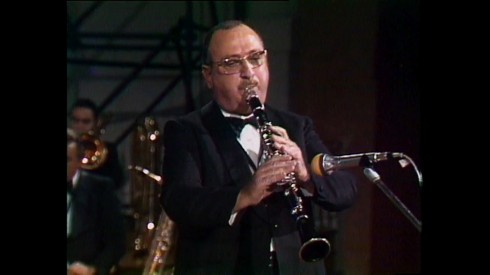Title: Lost Tapes Vol. 16 Santino Tedone
Groups: Santino Tedone clarinet, alto sax, flutes with Armandino Zingone Raf Montrasio, Pippo Caruso (1957-1959), Berto Pisano (1971), Antonello Vannucchi, Maurizio Majorana, Al Corvini, Dino Piana (1974), Sestetto Swing di Roma (1979) Gianni Ferrio-Armando Trovajoli (1980). Melancholy and Vietnam, tributes to Piero Umi-liani and Santino Tedone by Giuliano Di Cesare.
Years: 1956-1980 © 2023
Graphic: 3Heads Agency
Text: Livio Minafra
Translation: Rita Valentini
Discover, digitalization, sound track selection, editing: Livio Minafra
Mastering and restoration sound engineer: Gianluca Caterina
Label: Angapp Music – It
Produced by: Livio Minafra
Santino Tedone, the eclectic grumpy
U.S. Special Service Section H.Q. Air Force Command APO 520, Show Unit 520, year 1943, Puglia/Italy. Santino Tedone was 15 years old and was already touring airfields, hospitals, rest camps, and American Allied clubs in a quartet with the talented pianist from Bari, Bruno Giannini. In the same year, there are reports of him in Naples, performing in Gino Conte’s quartet, significantly among “the most acceptable jazz notes” as indicated by Adriano Mazzoletti in his book “JazLivioz in Italy, From Swing to the ’60s – Ed. EDT”.
The first 30 years of Santino Tedone were indeed marked by a wandering lifestyle, unlike the second part of his life, which was static and office-bound. Santino was born in Ruvo di Puglia on April 14, 1928, and was soon enrolled in the Music School officially led by Antonio Amenduni, a pianist and composer, but actually run by his brother Alessandro, a clarinetist and composer, since ’33. The registry records his first migration to Bari in ’40 with a return in ’42, and then a permanent move to Naples in ’49 at the age of 21. The childhood memories of young Santino Tedone, playing in the band in Ruvo with the “quartino,” are lost in the recollections of Raffaele Magrone, collected by his uncle Nunzio Iurilli, born in 1928 (saxophonist and jazz singer), who recounts the encounters between the two clarinetists and the veterans of the Band (the “gloriòs”) during celebrations and processions. After that, except for sporadic visits to saxophonist colleagues Franco Sette and Filippo Pellicani, there is little trace of him in the town, except for seeing him on TV in reference to the legendary Orchestra of RAI “Radiotelevisione Italiana” in Rome, a legendary formation of which Tedone was a lifelong member.
In practice, Mario Riva’s Canzoniere in the late ’50s, Studio Uno with Mina, Canzonissima, and much more until Fantastico in the ’80s, with incredible collaborations ranging from Pippo Barzizza to Lionel Hampton, from Johnny Dorelli to all the popular singers of the time, from Tony Scott to numerous collaborations with Mina herself on TV and even in live concerts (including the concert at La Bussola on August 23, 1978, Mina’s last public concert ever) to Peppe Vessicchio, at the beginning of his career in 1985, who experienced a particular prank/exam by Tedone, as he describes on page 63 in his book “La musica fa crescere i pomodori” (Music Makes Tomatoes Grow) published by Rizzoli. It’s the story of Italy through television, where “someone from Ruvo” was always there in his position as first clarinet and second alto saxophone (after Quarto Maltoni). What is striking is Tedone’s leap at the age of 15, from the band in Ruvo di Puglia to the court of Giannini (probably due to his trips to Bari in the ’40s), and then amazing Naples, and finally Rome at RAI when he was almost 30 years old. Because the mysterious and seemingly grumpy Tedone was a multifaceted musician.
In Naples, for example, he was among the leading musicians of the jazz scene. It can be said that throughout the entire 1950s, he was always a protagonist alongside Lino Quagliero and, above all, with Lino Liguori and Lucio Reale in the Modern Quartet of the Circolo Napoletano del Jazz. In 1954, Franco Vaccaro wrote about him in the Musica Jazz magazine, stating, “Surprising skills of the alto saxophonist Santino Tedone: an intelligent and talented musician who quickly became the favorite of Neapolitan fans.” However, in 1957, Armando Trovajoli was forming the Light Music Orchestra of RAI “Radiotelevisione Italiana” in Rome. Filippo Pellicani, a saxophonist from Ruvo di Puglia active in Milan in the ’50s, learned about the audition and informed his friend Tedone. The rest is history.
One day in the early ’70s, young Claudio Corvini, son of the trumpeter Al Corvini, who was the first trumpet of the Light Music Orchestra of RAI Radiotelevisione Italiana, heard Tedone warming up on the clarinet and asked his father who he was. The response was, “His name is Santino Tedone. He is one of the best clarinetists in Italy and maybe even more than that, certainly more than that.” However, precisely because of the stability of the orchestra, Tedone limited his collaborations significantly. Being strongly attached to his home, he never participated in evenings, jams, concerts, or reunions with his fellow musicians.
In the music collection, we start with Armandino and his Quintet, a colorful light music ensemble in which Santino, in addition to providing counterpoints on the alto saxophone, clarinet, and mandolin, also had the role of an improvising soloist (with the exception of “Ebb Tide” and “El Negrito del Batey,” where he was entrusted with the entire theme). These tracks are the only audio evidence of the virtuosic interpretative and improvisational trail that Tedone could offer to the city of Naples, to the extent that both Mazzoletti and Diego Librando (in his wonderful book “Il jazz a Napoli” – Ed. Guida) consider Tedone to be a Neapolitan! Further research reveals that Armando Zingone, known as Armandino, was able to build a highly respected quintet, partly due to his unrecognized talent-scouting abilities. Until the end of ’56, the ensemble included Raf Montrasio, a guitarist who later joined Carosone’s court (where he began earning 1,800 lire per night compared to Zingone’s 15,000 lire). So Armandino called upon a certain Pippo Caruso to replace him. Pippo Caruso was a friend of Enzo Lorusso from Ruvo, but above all, he would become a familiar face to entire generations thanks to Pippo Baudo, as the conductor of the RAI Orchestras in Rome and Milan. The same Giorgio Vanni on drums would later invent the famous jazz venue Capolinea in Milan.
In 1971, in the album “Pachidermi” with Junior Pisano from the record “Racconti della Natura” (Tales of Nature), Santino appears as a contemporary musician with challenging passages on the clarinet, and he doesn’t seem uncomfortable with it.
In 1972, we find him instead on Piero Umiliani’s LP “Africa” (Liuto Records), under the pseudonym M. Zalla, in his experimental works. For this session, Santino was involved with folk flutes and the G flute. In the album, Umiliani created “Sadness,” with an Afro flavor, “Sortilège,” with electronic new wave developments, and “Folk Tune,” with a pastoral touch. Once again, Tedone proved himself ready with surprising interpretations and improvisations, which momentarily brought him close to his fellow countryman Pino Minafra, known for his experiments blending world and jazz. In this sense, here are two stylistic tributes by multi-instrumentalist Giuliano Di Cesare: for “Sadness” → “Melancholy” and for “Sortilège” → “Vietnam.”
Moving on to his rare appearances as a sideman in one of Rome’s most renowned recording studios, Tele Cine Sound, run by Maurizio Majorana and Antonello Vannucchi, with their publishing company La Scogliera. We find him playing clarinet in a Dixieland style on the 1974 album “Gli Anni ’20” (The ’20s). In this project, which is associated with the still underappreciated Romolo Grano, we find four tracks that showcase his “American-style” talent, as Mario Schiano states in the interview in Librando’s book.
The compilation comes to an end with some gems in which Tedone stands out considerably. It practically marks the birth of the famous Sestetto Swing di Roma (Rome Swing Sextet) in their first session in 1979 with Benny Goodman’s “Good Enough to Keep” in Rome, featuring Franco Chiari on vibes, Lino Quagliero on piano, Enzo Grillini on guitar, Roberto Podio on drums, Giorgio Rosciglione on double bass, and Santino Tedone on clarinet (later replaced by others except for Franco Chiari). Finally, George and Ira Gershwin’s “The Man I Love,” rearranged by Armando Trovajoli and conducted by Gianni Ferrio. It is a recording from 1980 of a concert at the Foro Italico with the Ritmosinfonica Orchestra of Rome, which was a fusion of members from the Rome Symphony Orchestra and a representation from the Orchestra of Light Music of Rai Italian Television (including Tedone, Oscar Valdambrini, Mario Midana, Lino Quagliero, Antonello Vannucchi, and Trovajoli himself).
A very reserved man, after retiring, he withdrew into private life. He passed away in Rome on March 14, 2008.
Special thanks to Franco and Dino Piana, Giorgio Rosciglione, the late Adriano Urso, Raffaele Magrone, Claudio Corvini, Gegè Munari, Mario Raja, Gianni Oddi, and Raffaele Pugno, Santino’s nephew.

 English
English Italiano
Italiano